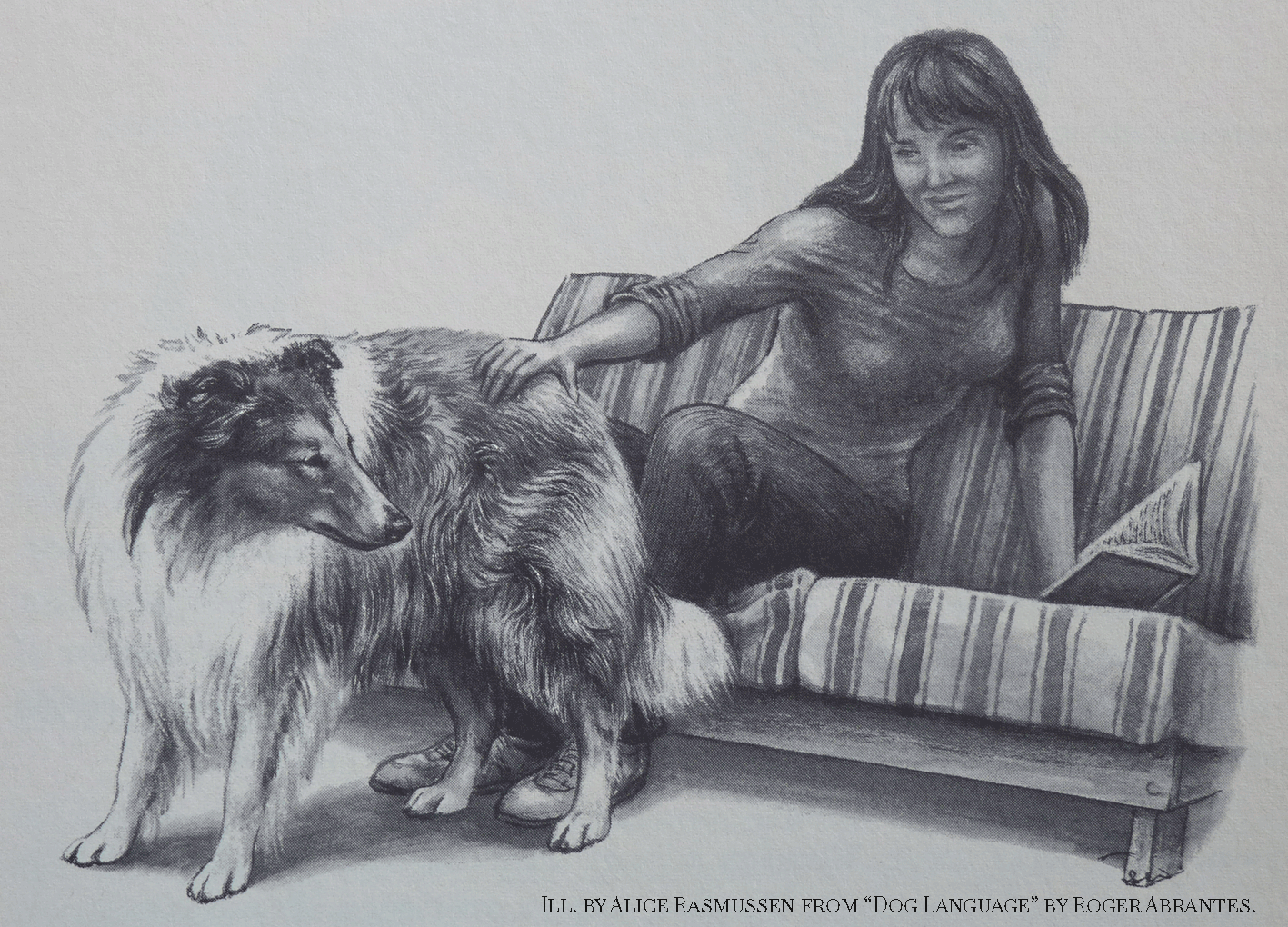The hip nudge is a common canine behavior. Dog owners often think their dogs are pushy or impolite when they turn their backs to them, sometimes even pushing them. Nothing could be farther from the truth.
A hip nudge is a behavior a dog shows when it nudges another with its hip or rear end. Dogs often use this behavior towards us during greeting ceremonies when we show them passive friendliness by crouching down to it. The dog will walk towards us and turn round. Then, it will either nudge us gently with its hip or rear end or stand passively with its back turned to us.

This dog shows a half hip nudge, still a sign of friendliness. Both human and dog are relaxed and show their peaceful intentions and that they trust one another (photo by Lisa Jernigan Bain).
The hip nudge functions as a pacifying behavior. It signals friendliness. By turning its back to us, the dog shows it doesn’t intend to attack—it directs its teeth away from us. It also shows it trusts us.
Dogs use a variety of this same behavior during mating rituals when the male nudges the female.
I described this behavior first time in 1987 in the original edition of “Dog Language,” after having spent several years observing, photographing and filming dogs (Canis lupus familiaris), wolves (Canis lupus lupus) and foxes (Vulpes vulpes).
There are only small differences between wolf and dog, which we can describe as dialects. The fox is different because, although displaying many behaviors common to the other two, it is not as social as its cousins.
References
- Abrantes, R.A. (1992/1997). Dog Language—An Encyclopedia of Canine Behavior. Wakan Tanka Publishers, Naperville, IL.
- Abrantes, R.A. (1997/2005). The Evolution of Canine Social Behavior. Wakan Tanka Publishers, Naperville, IL.
- Fox, M.W. (1971). Behaviour of Wolves, Dogs and Related Canids. Harper & Row.
- McFarland, D. (1999). Animal Behavior. Pearson Prentice Hall, England. 3rd ed.
- Scott, J.P. and Fuller, J.L. (1965). Genetics and the Social Behavior of the Dog. University of Chicago.
- Zimen, E. (1981). The Wolf – his Place in the Natural World. Souvenir Press.
Featured image: The hip nudge functions as a pacifying behavior. It signals friendliness (illustration by Alice Rasmussen from “Dog Language” by Roger Abrantes).
Featured Course of the Week
Ethology Ethology studies animal behavior in its natural environment. It is one of the fundamental courses in your curriculum. A reliable knowledge of animal behavior is the basis to create a satisfying relationship with any animal we train.
Featured Price: € 168.00 € 98.00

Learn more in our course Ethology. Ethology studies the behavior of animals in their natural environment. It is fundamental knowledge for the dedicated student of animal behavior as well as for any competent animal trainer. Roger Abrantes wrote the textbook included in the online course as a beautiful flip page book. Learn ethology from a leading ethologist.
















